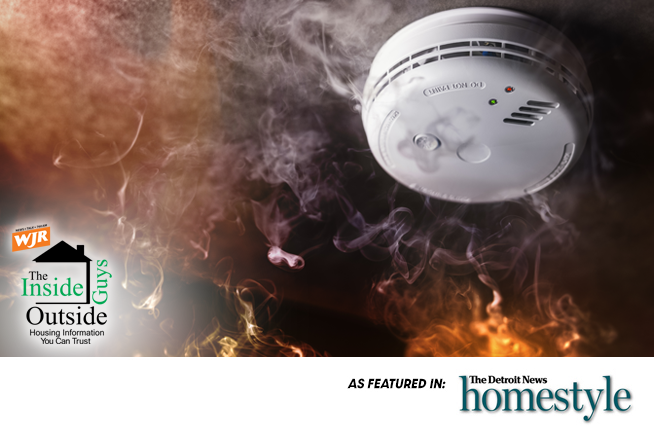
By Ken Calverley and Chuck Breidenstein
DETROIT, October 7, 2021 ~ In the time it takes most people to read this article, approximately five house fires will start in the US.
Between now and this time tomorrow, nearly two people will have perished in a house fire, and they were most likely children under 14 years of age.
Each autumn, The Guys devote part of a broadcast to in-home fire safety.
Fall is the time of the year we all begin to hunker down inside our homes and kick up the heat. Fireplaces are lit for the first time in months and the thermostat is switched from “cool” to “heat.”
Candles are burned to create an indoor ambience. And people and homes perish; 45% of all house fires occur in the fall months.
There are four fairly simple and inexpensive things we can do to minimize the chances of becoming one of these statistics.
Each family should have a fire evacuation plan, or FEP. The National Fire Protection Association, NFPA, cites data to support the fact that 25% of families have no such plan, and an even higher percentage have discussed the issue, but created a plan.
Plans should include assignment of a leader, a direct route out of the dwelling for each person, and a designated meeting point outside the home, perhaps at the curb, or a tree well away from the home.
The leader may be tasked to make certain all are awakened and able to evacuate. Studies show that, even in homes with audible alarms, young people or those with hearing deficiencies may not awaken to alarms. In house fires, smoke inhalation is the leading cause of fatalities, so the plan should also address keeping bedroom doors closed to minimize smoke and flame spread and trying to exit sleeping areas from a window.
Sample plans are available through the NFPA website.
The second part of our strategy is to make certain the home has smoke detectors with good batteries.
There are four basic types of detector available. One uses ionization to detect heat which is good for fast burning fires. Two others are intended to detect smoke while a fourth is a dual sensor alarm intended to detect both excess heat and smoke.
The dual sensor alarms are suggested for home applications where you may have a fast burning grease fire in the kitchen or a smoldering fire in the bed caused by a cigarette butt.
Detectors should be located in every bedroom within 12 inches of the ceiling where heated air will rise. Additionally, we should install them outside the bedrooms on the ceiling away from windows, grilles, ducts, etc.
Top and bottom of stairwells on every floor are also good locations, as well as utility rooms, laundry rooms and kitchens.
Studies show 50% of house fires originate in the kitchen. Cooking and heating equipment are the top two causes of house fires, followed by electrical malfunctions.
Ideally, smoke alarms should be professionally installed and hard-wired on a single circuit. The life expectancy for all such alarms is in the range of 10 years.
The third piece of the fire safety plan is fire extinguishers. First Alert and Kidde make small units that cover most types of house fires. They will be rated clearly on the label as ABC for application to different types of fires.
You should have at least one per floor and the garage, clearly visible and readily accessible if needed.
Apply the PASS method for use: Pull the pin, Aim low at the base of the fire, Squeeze the handle slowly and Sweep from side to side.
The fourth component is vigilance. Keep portable heating appliances away from combustibles. Use only high-quality candles in a controlled environment. Store solvent-based products in a shed away from the house. Never walk away from a stove with the burners activated.
Attention to such things can help to keep you and your loved ones safe in the one place we should all feel safe – home.
MORE ARTICLES:

